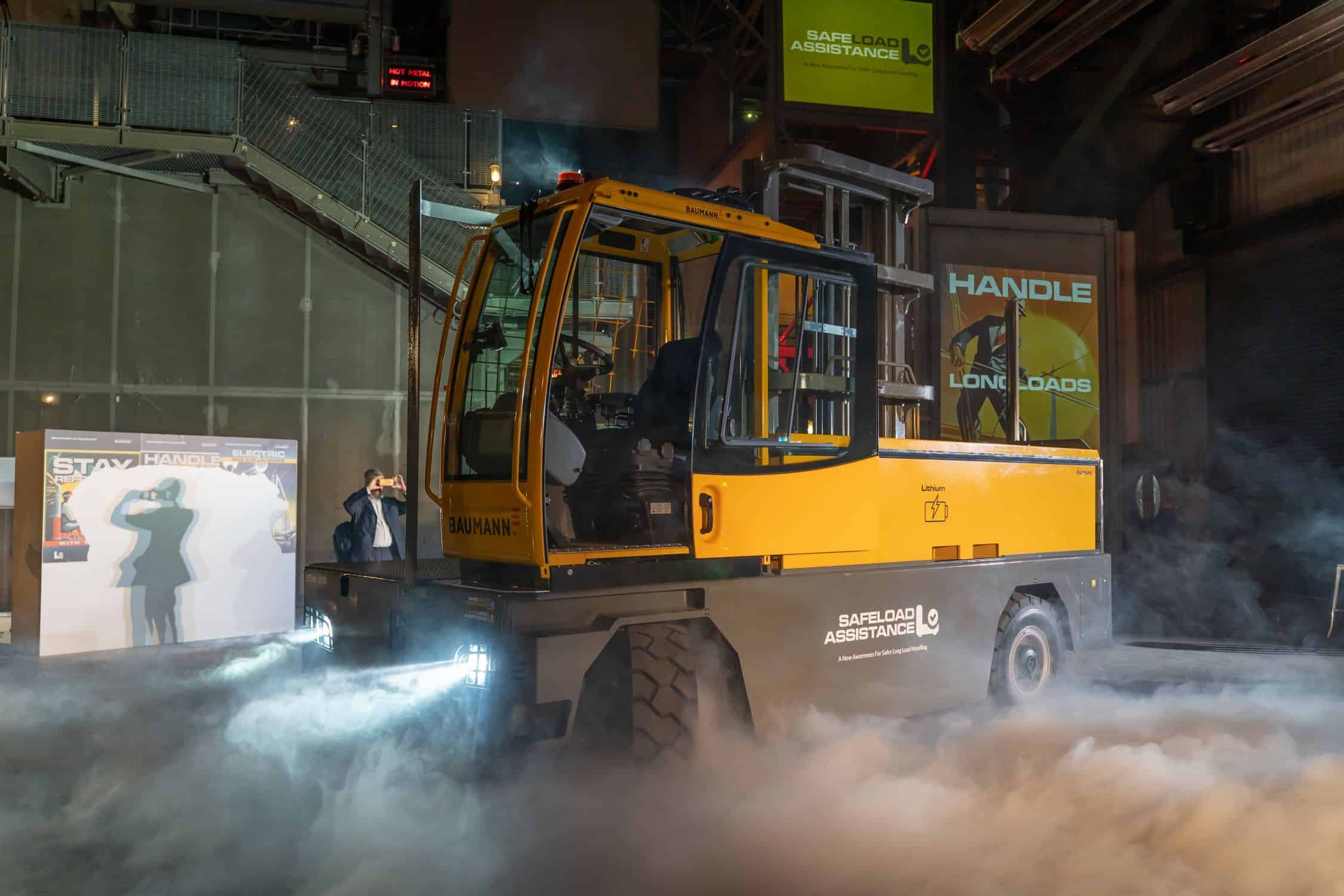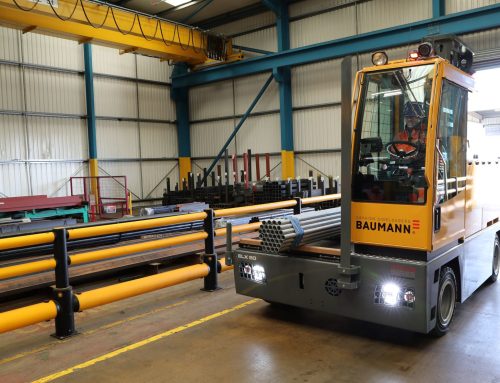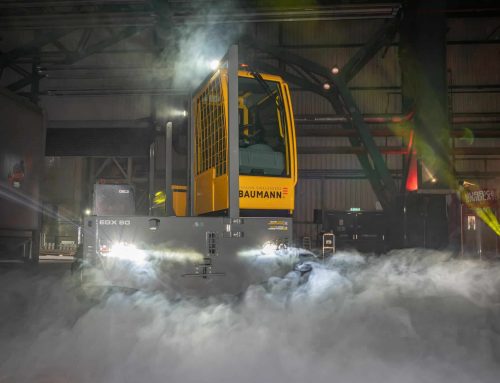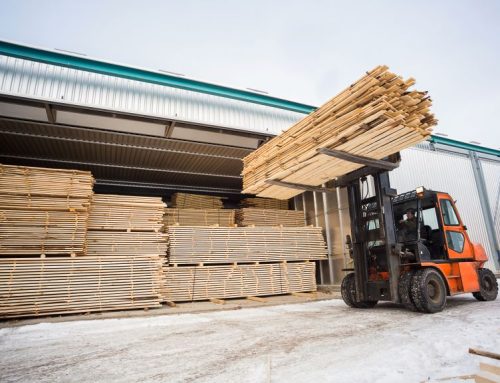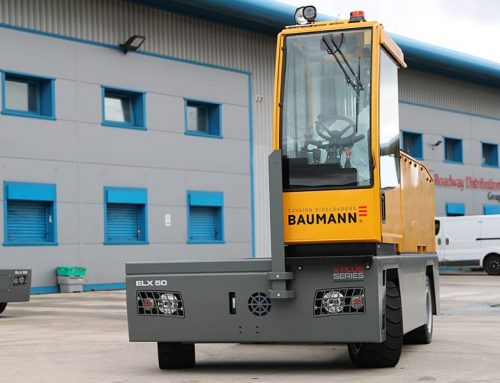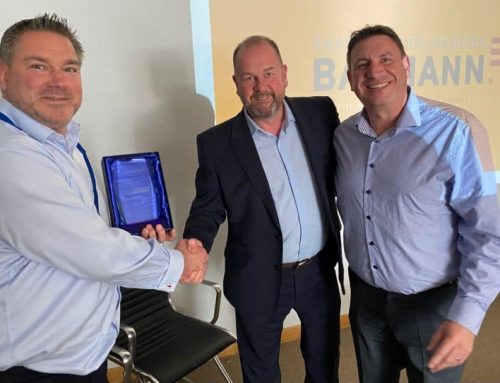Visitors to the Magna Science Adventure centre, a former steelworks in Rotherham, were treated to the UK launch of the latest in high performance electric sideloaders.
Stilt walkers, street artists and AI inspired videos were just part of the dystopian-themed experiential launch, as Baumann’s ‘Department of CoRrections’ educated the guests on the best way to carry and handle long loads.
The EGX X-Plus is the culmination of a decade of work, featuring the innovative SafeLoad Assistance, a system designed to help prevent tipping incidents and improve overall safety in long load operations.
The 120-volt EGX range is also equipped with extended outreach, lead acid or lithium-ion batteries and highly efficient new motors featuring vector control technology. The combination of higher voltage and vector control provides improved motor responsiveness, resulting in smoother acceleration and deceleration, increased battery longevity and more precise load handling.
Commenting on the launch, Tony Benson, global marketing manager, said: “We are thrilled to be here giving customers, our dealers and press the chance to get up close to the EGX model and the new SafeLoad Assistance system. We’ve put years of research and development into the truck and it’s great to see the overwhelmingly positive response.”
The EGX also features an upgraded version of Baumann’s award-winning VRS (Variable Reach System) Archimedes screw outreach system, whilst the lithium-ion battery option is another first for Baumann. Lithium technology provides long operating times and fast charging, allowing for more efficient use of time and resources.
“It is a never-ending battle to win hearts and minds for the sideloader concept,” added Tony, “as people are much more familiar with counterbalance forklifts than these machines built for the long loads job. With the EGX, we are taking a big step forward in improving safety in material handling operations. Vector control technology and the lithium-ion battery options provide customers with greater choices for efficiency and productivity.”
The challenges in delivering stability measures to handling equipment are significant, due to the number of variables and the fluidity of load movements.
All materials handling equipment is classified based on the safe amount of weight they can lift, their nominal capacity. A number of real-world factors influence this ‘safe working load limit’, including the truck’s counterweight, the type of mast, the height and reach at which the load is held. Even the tyre pressures and ground conditions can influence the outcome.
It is difficult for manufacturers to know all these different variables, but manufacturers use a crucial parameter, the load centre, to provide greater certainty.
Every load has a centre of gravity. The point at which the weight is focussed. It may be the physical centre of the load, but not if the load is heavy at one side or irregular.
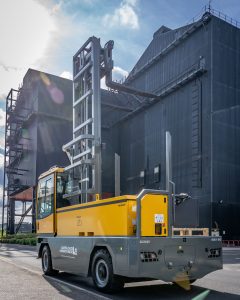 Forklift manufacturers therefore refer to the distance between the centre of gravity of the load being lifted and the inner heel of the forklift’s forks. It is a critical factor in determining the maximum weight capacity and stability of a forklift or sideloader, and basically says the machine is safe to use “in this specific way.”
Forklift manufacturers therefore refer to the distance between the centre of gravity of the load being lifted and the inner heel of the forklift’s forks. It is a critical factor in determining the maximum weight capacity and stability of a forklift or sideloader, and basically says the machine is safe to use “in this specific way.”
The truck’s load centre is usually expressed in inches or millimetres, and whether the operator adheres to this therefore depends on their awareness and the size, shape, and weight distribution of the load being lifted. Accidents and damage often occur when operators either choose to ignore or are unaware of the limits placed on the truck.
Baumann’s system assesses forces within the chassis, not just via the mast, in effect by-passing the load centre issue, warning the operator when the safe limits are being exceeded.
Baumann MD, Klaus Pirpamer, was equally impressed. Said Klaus: “The setting is amazing! We are immensely proud of the work that’s gone into the truck and to bring it here to Magna seems very appropriate.”
Steel and timber handling sites are two of the most common types of applications for Baumann sideloaders and the former steel works, a vast building, a third of a mile long and 150 feet high, provides an impressive backdrop for thousands of school children and corporate guests.
“This is a real game changer,” concludes, Klaus Pirpamer. “Developing the technology within the chassis has allowed us to find the right way to answer the load centre question, to give the accurate levels of safety the market has always desired. Reducing damage costs and improving safety are high priorities for all our customers and these features will provide levels of awareness that were previously impossible to achieve.”
